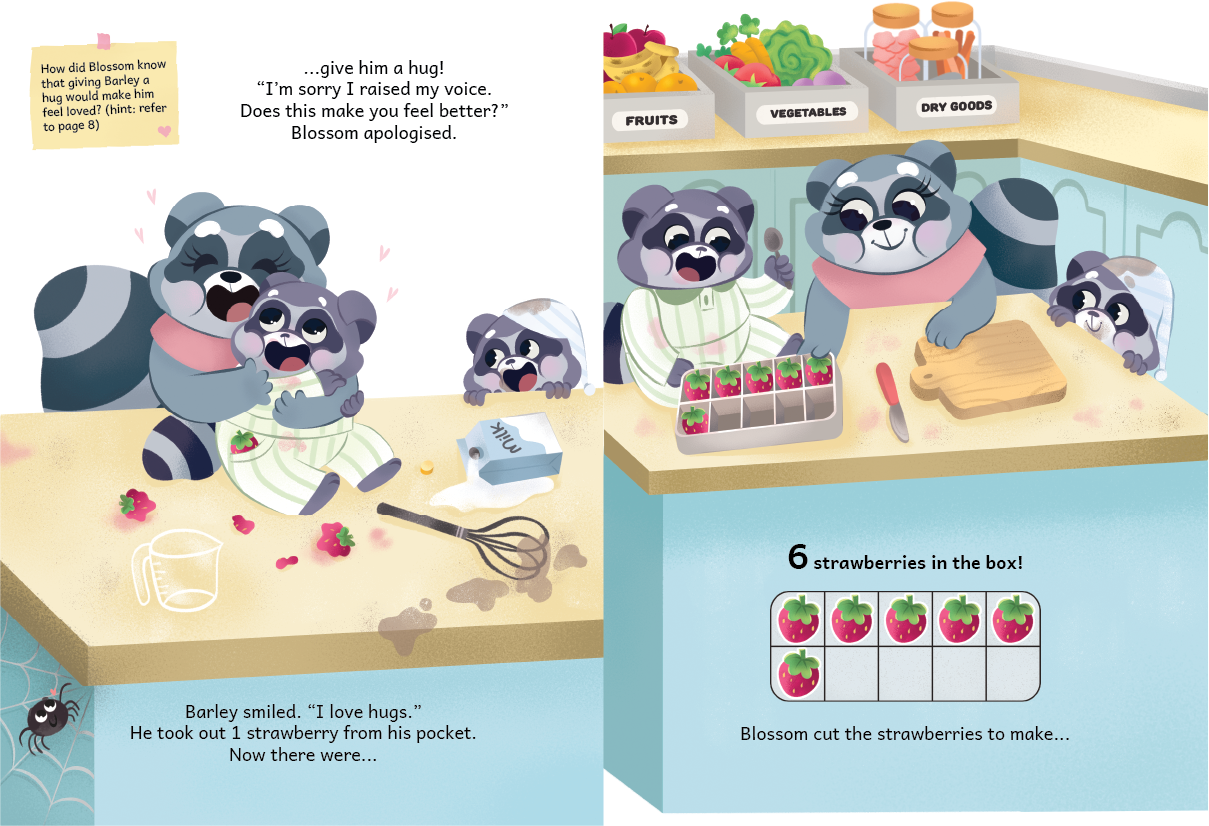Teaching Children the Five Love Languages: Building Stronger Bonds from a Young Age
Every child wants to feel loved, but did you know that they experience love in different ways? Dr. Gary Chapman’s concept of the Five Love Languages—Words of Affirmation, Quality Time, Acts of Service, Physical Touch, and Receiving Gifts—helps us understand how children best receive and express love.
By recognising our child’s primary love language, we can nurture a deeper connection, boost their emotional well-being, and help them grow into kind, confident individuals.
Here’s how you can teach and show love in all five languages to your little ones!
1. Words of Affirmation: Speaking Love into Their Hearts
Some children light up when they hear praise, encouragement, and kind words. They need to hear that they are loved, appreciated, and valued.
💬 How to Share This Love Language:
✔️ Tell them, “I love you just the way you are.”
✔️ Praise their effort: “You worked so hard on that drawing. I’m proud of you!”
✔️ Leave little notes in their lunchbox or under their pillow.
✔️ Sing a special "I love you" song for them.
🌟 Try This: Start the day with an affirmation like, “You are kind, brave, and loved!”
2. Quality Time: Love Through Undivided Attention
For some children, love means presence. They feel most cherished when you give them your full attention—no distractions, just time together.
⏳ How to Share This Love Language:
✔️ Set aside 10-15 minutes of one-on-one time daily—no phones, no chores.
✔️ Have a tea party, build Lego, or go on a “nature treasure hunt.”
✔️ Let them help with cooking or gardening (kids love being involved!).
✔️ Plan a "special day" where they choose an activity.
🌟 Try This: Create a “Mommy/Daddy & Me” jar filled with fun activity ideas. Let them pick one each week!
Image from storybook The Breakfast Surprise - Counting, one-to-one correspondence
3. Acts of Service: Showing Love Through Kind Actions
Some children feel most loved when you help them with something important to them. These little gestures make them feel safe and cared for.
🤲 How to Share This Love Language:
✔️ Fix their broken toy with care and say, “I know how much you love this!”
✔️ Teach them how to do small tasks with you (e.g., baking together, folding their clothes).
✔️ Bring them a warm towel after bath time.
✔️ Help them set up a fort for their pretend play.
🌟 Try This: Surprise them by doing one of their chores for them and say, “I wanted to do something nice for you today!”
Image from storybook The Breakfast Surprise - Counting, one-to-one correspondence
4. Physical Touch: Love Through Hugs & Cuddles
For some children, nothing says “I love you” like a big hug, a snuggle, or a playful tickle fight! Physical touch is their strongest way of feeling loved.
🤗 How to Share This Love Language:
✔️ Give morning and bedtime hugs (make it extra long for deep connection).
✔️ Hold their hand while walking together.
✔️ Cuddle up with them during storytime.
✔️ Have a “secret handshake” just for the two of you.
🌟 Try This: When they’re upset, instead of using words, offer a hug or gentle back rub—it can be more powerful than a lecture.
Image from storybook The Breakfast Surprise - Counting, one-to-one correspondence
5. Receiving Gifts: Thoughtful Surprises from the Heart
Some children treasure little surprises because they see gifts as a symbol of love. It’s not about the size or price—it’s about the thought behind it!
🎁 How to Share This Love Language:
✔️ Give them a handmade card or a little drawing just for them.
✔️ Pick a flower from the garden and say, “I thought of you when I saw this!”
✔️ Leave a small surprise under their pillow (a sticker, a cute eraser).
✔️ Gift experiences rather than things—a homemade coupon for “one extra bedtime story” can be more meaningful than a toy.
🌟 Try This: Make a “Love Box” where they can collect tiny notes, drawings, or small keepsakes from you!
Image from storybook The Breakfast Surprise - Counting, one-to-one correspondence
Why Teaching Love Languages Early Matters
When we intentionally express love in ways our children best understand, we:
✔️ Build a secure parent-child relationship ❤️
✔️ Help them express love to others 🤗
✔️ Boost their self-esteem and emotional intelligence 🌟
Children thrive when they feel deeply loved. By using all five love languages, we teach them that love isn’t just something we say—it’s something we show, in big and small ways, every single day.
So today, let’s pause and ask: How does my child feel most loved? 💕
Which love language does your child respond to the most?





